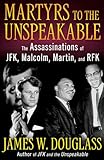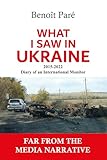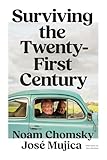Grizzly bears and gray wolves. John McCain and Al Gore. Hog farming and the Endangered Species Act. All of these and more are the focus of Jeffrey St. Clair’s latest book Born Under a Bad Sky. Myths of governmental efforts to protect the environment are exposed for the half efforts they are and the corporate sponsorship of the best-known elements of the environmental movement are decried. As one reads this text, it becomes clear that while we may have begun to save ourselves from an immediate environmental apocalypse we have not prevented one. In fact, argues St. Clair, we may actually be closer to that possibility now than were were a mere two decades ago.
Why? The answer is simple: a blindness to the future that is based on a desire to make profits now. This greedy desire combined with a corporate control of government unknown since the 1890s if ever means that regulations are changed to suit corporate desires or, if that is not possible, they are just ignored. New laws that are passed (with plenty of pork barrel and promises for all those politicians that vote aye) are falsely portrayed as being for the good of the environment when in reality they provide almost total license to the timber and mining industry to do what they will in national lands. Meanwhile, the national security state gets a free pass from the environmental laws that do exist, leaving uranium tailings in water supplies and otherwise poisoning the land and sky for generations to come.
Where I live in western North Carolina is beautiful mountainous country. Rivers cut through valleys and trout run the streams. Bear and raccoons live nearby. Possums amble through my yard. Yet, all is not right. Locals and those who have lived here for more than twenty years get righteously angry whenever a new development is pushed through the county board of commissioners. The state Department of Transportation ignores demands from citizen’s groups and environmentally inclined architects regarding its plans to expand the interstate system. Instead, they insist on a plan that would cause the most disruption of the surrounding communities and cause the most environmental degradation. No one knows exactly why but rumors of payoffs and corporate favors always come up whenever the highway topic comes up. The national parks around here, while beautiful and relaxing, tend to cater to the RV set — a situation that makes tent camping a secondary concern of the Park Service. Trails in the Appalachian range nearby have been set aside for mountain bikers, so now when one goes hiking they must contend with SUVs laden down with expensive mountain bikes taking over the sides of the state roads and mountain bikers racing down trails previously used only by hikers. While part of my plaint is one of comfort, the bulk of it concerns the damage done to the forests these trails cut through.
My laundry list of environmental degradation in the preceding paragraph is not specific to western North Carolina. Similar scenarios unfold throughout the United States. St. Clair focuses his exposé on the western half of the United States, if only because that’s where he lives. Where the national forests near my home deal with mountain bikes and the threat of ATVs, Yellowstone and other parks suffer under the roaring treads of snowmobiles. More importantly, the parks and forests of the West are provided to corporate ranchers for grazing and to the timber and mining industries to clearcut and mine. All of these ravages provided, of course, by the government in DC, where most administrators and legislators have never met a profit scheme they didn’t like.
As noted previously, most of the book is made up of hard-hitting articles regrading the destruction of the environment and exposes of those determined to continue that destruction. Many, if not all of them have appeared in print before. The jewel of the book lies in the last 116 pages of narrative. Titled “The Beautiful and the Damned,” this section is St. Clair’s beautifully rendered tale of a trip down some of the US West’s best known rivers. A poetic offering to the river gods and a stinging indictment of those who would defy them, the final section of Born Under a Bad Sky takes the volume far beyond its muckraking beginnings and underpinnings. In doing so, St. Clair has created a classic narrative of writing that simultaneously includes and transcends the best of the travel and nature writing genres. Seemingly inspired by Hunter S. Thompson, Aldo Leopold and the sheer beauty of the natural surroundings it describes, “The Beautiful and the Damned” does more than end Born Under a Bad Sky with a flourish, it delivers it into the genuinely sublime.
While the history and events discussed in this book are not pretty (in fact, they are pretty damn depressing at times), St. Clair’s writing describes them in a style that he has become known for. Hard-hitting with occasional humor, he lays out the facts of his subject matter and then reels in the reader with prose that captivates the reader like the best blues narratives. You get the story and you get it with an emotional force and truth you’ll rarely find in the New York Times.










